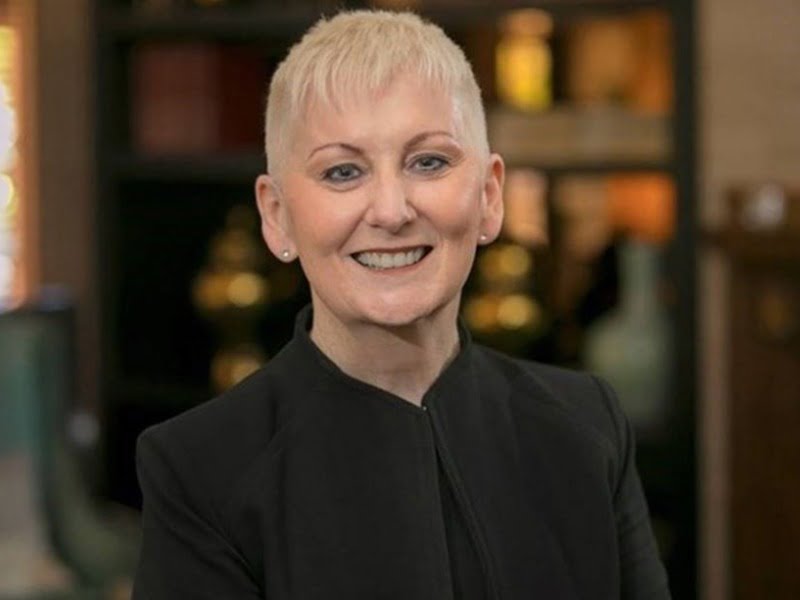Over the past week, there were two very significant announcements regarding healthcare. But the announcements could not have been more different in terms of ambition, future focus and person centred.
The first was the unveiling of the Apple Watch Series 6, focused squarely on healthcare and wellness in the relentless pursuit of consumer empowerment through health insights. The Apple Watch is not just a watch, but a connected health ecosystem.
The second announcement was by the Australian Government, parading the 6-month temporary telehealth extension as “universal telehealth” and a “revolution in health delivery”.
Do not let the “$2 billion investment” marketing spin distract from the underlying issue: There is no telehealth strategy.

Three years ago, I wrote about how my chronically-ill heart patient husband, abandoned by government, had turned to Apple Health.
In the three intervening years nothing – from government – has changed.
These two coinciding announcements starkly demonstrate how utterly out of touch Australian Government policy is in terms of the trajectory of telehealth innovation.
You might think that the current pandemic would be a spur to change, that government might finally embrace the full potential of the digital revolution in consumer healthcare to the benefit of all Australians.
Clearly, that is not the case.
When Australians emerge blinking into the light of the post-pandemic world, whatever that looks like, they will be impoverished.
Not just by the economic impact of the virus, but by squandered opportunities in digital consumer healthcare.
These opportunities do NOT require new inventions. Rather, these opportunities require innovation, a thoughtful repurposing, of existing technologies, policies, processes, payments and design.
What are these digital health opportunities?
When telehealth was hurriedly introduced in Australia in response to the need for social distancing between doctors and patients, it came with the caveat “this is temporary”.
And it is still temporary.
Whilst the US is in dire circumstances battling COVID-19, the US Centre for Medicare and Medicaid Services (CMS) did move aggressively in early 2019 announcing the overhauling and modernising CMS’s policies for new technologies in order to drive responsive servicing innovations that will endure the test of time.
This suite of US Medicare claim codes for innovative telehealth services predates the pandemic.
These include multi-modal services such as ‘virtual check-ins’; and the exchange and remote evaluation of images and videos.
To facilitate remote servicing and support, these US codes also fund the uploading and remote analysis of patient’s own physiologic measurements so that doctors can closely monitor heart failure and other chronically ill patients when they return home post-surgery or admission
These are squarely aimed at reducing potentially deadly, and certainly costly, hospital readmissions.
Easy-to-use at home devices already exist, and companies like Apple continue to add health monitoring capabilities to their smartwatches.
I have focussed on Apple because that is the platform we chose several years ago. But Google also has a health ecosystem and most of the big technology players are moving into health care.
Heart rate, sleep tracking, ECG and now oxygen monitoring all provide incredibly important information to a patient’s physician.
But Australia is still to approve the Apple Watch ECG functionality released in 2018 and on this track record unlikely to quickly approve the oxygen monitoring capability just released in the Apple Watch Series 6.
This is despite these being approved for use by the US FDA, perhaps the most stringent medical device approving authority in the world.
Most recently, Singapore announced a partnership with Apple on a national health initiative using Apple Watch; the LumiHealth app encourages healthy lifestyle changes through technology.
This is a game-changing move from rehabilitation into primary and secondary prevention, a long-term strategy seeking to minimise and hopefully avoid the need for surgeries and other expensive medical interventions.
And of course, greatly improving the quality of life of citizens. Something we could definitely use in Australia, especially when we emerge from the pandemic.
This success isn’t accidental. Apple practice extensive co-design with leading heart specialists and research centres, with rehabilitation units and of course with patients.
Worryingly, many in the Australian Government consider co-design a buzz word. In fact, co-design is not even mentioned in the Digital Transformation Strategy – which goes some way to explain the well documented CovidSafe App ongoing failure.
As part of our development of the AI powered Digital Human Cardiac Coach and the work we have done in the US, we have participated in many forums run by the Australian Cardiovascular Health and Rehabilitation Association (ACRA), and leading global health innovation networks involving cardiac rehabilitation experts.
The pandemic has caused face to face cardiac rehabilitation to grind to a halt around the world. As I wrote in ‘Telehealth and the Tale of Two Pandemics’, millions of heart patients and their families are being impacted around the world right now.
As Australia tried to shift to alternate modes of service delivery, the use of video where available was hugely problematic because there were no standards and no consensus across the private and public health sectors.
Zoom was popular because many patients already used it to talk to their families but with other platforms, including those “endorsed” for use, patients had great difficulty connecting and many simply could not connect. And all this at a time of great personal physical trauma and emotional anguish. This is our lived experience.
As always, front-line health staff worked under enormous pressure to conceive solutions and work-arounds in very short time frames, to meet the harsh reality of the patient experience.
But temporary telehealth does not create sustainable innovative servicing models, nor address widespread systemic problems that cannot be deferred to the post-pandemic period.
As stated by the Australian Healthcare and Hospitals Association (AHHA), the Australian Government needs to “specifically consider telehealth care models better suited to team care arrangements for chronic disease management, especially in older patients with multiple and complex chronic conditions’.
“The whole future of telehealth and other forms of virtual healthcare requires not only forethought but courage – courage to rethink models of care and payments to better suit modern healthcare and technology, and courage to put patients at the centre of changes.”
The Australian government can no doubt provide many reasons as to why it has no coherent forward leaning telehealth strategy and one that encompasses the ecosystem of consumer digital health.
Temporary telehealth not only lacks strategy – it lacks TRUST and confidence.
Australians aren’t trusted to access welfare payments when we desperately need them; bring in Robodebt, itself a failed digital initiative – worse, unlawful.
We aren’t trusted to access disability payments even after meeting all of the byzantine requirements, overcoming documents repeatedly lost by the NDIS, and endless meetings with ill-informed bureaucrats and outsourced service providers.
People with disability now face the ignominy of some unknown person, a stranger, interviewing them and observing them in their home for just 20 minutes with the fear of over-turning the months and in some cases years of decisions, planning, cost and emotional pain that has gone before.
And we aren’t really trusted to use telehealth according to our needs. Good grief, Australians might actually talk to a doctor for once in their lives and be diagnosed at risk of chronic illness simply by answering a few family history and lifestyle questions with their GP.
Well, says the government, Medicare costs might go up. But hiding in plain sight on the other side of the ledger, is the massive numbers of individual cases of undiagnosed chronic illness costing society billions of dollars.
And, finally, we aren’t trusted to wear technology on our wrists that can prompt us to seek help from a healthcare professional.
Technology that has already been developed, already approved for use elsewhere. Technology that has already saved lives.
Marie Johnson was the Chief Technology Architect of the Health and Human Services Access Card program; formerly Microsoft World Wide Executive Director Public Services and eGovernment; and former Head of the NDIS Technology Authority. Marie is an inaugural member of the ANU Cyber Institute Advisory Board.
Do you know more? Contact James Riley via Email.

